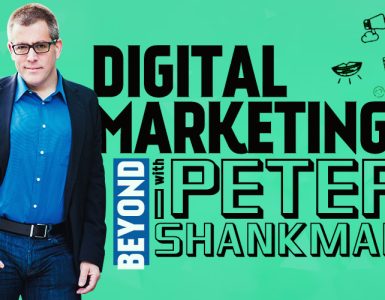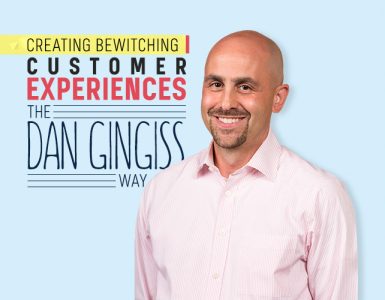Hello and welcome to another special episode of Branex Talks. In today’s episode, we are going to interview a really special guest and a person who has been in the industry for more than 15 years. She has served in companies like Motorola, Citrix, Brightstar Corp. and is currently the Head of Global Internship Program at Microsoft. She is an amazing storyteller and has won Peak Performer Award (2017, Microsoft), Social Media Guru Award (2016, Social Tools Summit) and Think Tank Marketing Award (2016, Microsoft). With immense pleasure and gratitude, we would like to welcome Miri Rodriguez to our blog.
Branex: Miri, thank you for taking out time for Branex. One of the most prominent things on your LinkedIn profile is that you have more than a hundred endorsements for marketing. How do you approach marketing and strategies?
MIRI: Hi there! Thank you so much for featuring me here. I’m honored and humbled! I have more than a hundred endorsements on LinkedIn? Hahaha, are you serious? That’s awfully kind of people! Now I need to go check who endorsed me and thank them!
I see marketing as a delicate tool to intrigue and entice audiences. It really is a delicate practice, it’s also constantly evolving so strategies ought to be kept fresh and relevant since audiences, channels, markets, industries and tools are ever-changing.
Branex: Storytelling is an art and brands who focus on their storytelling tend to get more out of the audience, how do you describe good storytelling and how can brands and companies improve their storytelling?
MIRI: I often say that storytelling isn’t the mere telling of stories, but the careful design of a story mission, characters, arc, structure, elements and techniques. Good storytelling is about storylords turning story words into story worlds! Meaning, every step of the design process is taken into consideration even before the story is created to ensure it lands well with the intended audiences.
Brands looking to improve their storytelling should move away from abused story structures such as “Hero’s Journey” and begin designing stories that consider their specific audiences. Not all stories need to have a hero, or a happy ending..but all stories should evoke emotion from the audience so that they become memorable. Companies should begin their storytelling journey by asking themselves “Who is my audience and what emotion do I want to awaken from them with my story?”
Branex: Miri, you are an amazing storyteller. We want to know how does one become a good storyteller? What are the small nuances you would recommend to take into consideration? What are the must-have standards? What extremely positive examples must be taken as inspiration?
MIRI: Ah! I don’t know about amazing, but schooled, yes. Mastering storytelling is like every other skill set. Practice makes perfect. There is no right or wrong way to tell a story, but great storytellers will spend a significant amount of time chiseling away at the raw materials of story (characters, plot and conclusion) and allowing the stories to take the form of their own, characters to evolve themselves and alternate conclusions or storyworlds to appear.
The art of storytelling consists in elegantly enabling the story to unfold once the story spine has been meticulously designed. That takes creativity, empathy, imagination. The science of storytelling is ensuring the right elements are in the right places and for that, you must try out different techniques until one works. I’m personally a fan of designing story prototypes (or concepts) and testing them with audiences instead of spending a lot of time and effort on big production stories. My tried and proved method has been using Design Thinking principles to craft stories as each step of this approach has forced me to become nimble, more creative but also calculating at the craft.
Branex: You are the Head of the Global Internship Program at Microsoft, with great speaking skills and many great honors under your belt. When you first started out, did you ever think you would reach there, and what drove you towards this great success? How did you overcome your obstacles?
MIRI: Oh gosh no. Never. If you were to have told my-20 year old-self that I’d be here decades later, she would have laughed at you! I think one of the biggest drivers in life is the notion that we need to leave a legacy for ourselves.
I constantly ask myself: what is my legacy?
What will people say when I’m gone?
How will I be remembered?
There was a time in my life where a title or a specific salary amount was a synonym of success to me. I later realized that success is actually multidimensional. So for me today, overall success means becoming the best version of me in the many areas and roles that I serve (wife, mother, sister, friend, worker, mentor). When you strive to leave a legacy of excellence within your own intersectionality, you have a great chance at being successful in life. Will there be obstacles? Haters? Setbacks? Detours? You better believe it.
How did I overcome them?
I didn’t. I watched them. I explored them. I accepted them. I learned from them and I kept going.
Persistence is the key to success. Many people start a new mission, goal, or New Year’s Resolution, but seldom do they get to see the finish line. Keep going. Finish what you started. Obstacles can be your biggest enablers on your road to success. It all depends on how you see them.
Branex: Being a marketing expert, what would you suggest to brands and startups who are facing difficulty with their digital and social media strategy?
MIRI: I see a lot of brands struggling with where they should have a social media presence (should the brand be on every channel?) and if they need to follow the newest trend in digital strategies (such as influencer marketing). My suggestion is to always think first about the customer/audience and their needs and not to get caught up on the sometimes fleeting digital landscape tendencies.
If your customer is not on SnapChat, why would you be there? You know your customer best. You know where they are, what they need, what they like or don’t. Go where your customer is and give them what they want, while also keeping aware of the everchanging demands of the industry. It’s about making calculated decisions while at the same time trusting your intuition.
Branex: B2C and B2B, both are two different categories. Do you think a B2C marketing strategy is conceivable for B2B or vice-versa?
MIRI: We’ve heard the statement: it’s no longer B2B or B2C, it’s H2H (human to human), and I couldn’t agree more. While fundamentally, some content techniques and deliverables do differ from B2B and B2C, ultimately in both categories, there are humans at the end of each content transaction. Once again it’s all about considering your audience first. In Design Thinking, the very first step is to empathize with your audience. You have to spend time getting to know them better, and understanding them as much as possible. That way any strategy (marketing, communications, storytelling) is guaranteed to land the best way.
Branex: Having so many years of experience comes with lots of challenges, who do you think inspired you to pursue this field?
MIRI: I actually wanted to be a pilot. Hahahaha. For some personal circumstances, I wasn’t able to pursue aeronautics so I took whatever was available next in college (Marketing and Communications) at a time where social media or jobs like storytellers weren’t even a thought. I think marketing pursued and found me, because ultimately, I became fascinated by the psychology and neurology of human response to content. There’s just something magically radical about the ability elements, photography, typography and story have to capture an audience and transport them to a new world, never for them to return the same way we found them. In a way, I guess marketing is a type of aeronautics. There is that science of making your audience “travel through the air” with purposefully designed content. 😊
Branex: Lastly, Branex is a web and app development plus top digital marketing agency that helps startups and small businesses grow. How important is it for businesses, new or established, to collaborate with professional digital media agencies?
MIRI: The ever-changing landscape of branding continues to be influenced by many outside factors such as new generations, evolved digital channels, and advanced technologies and this will never stop. Marketing strategies that may work today will likely be obsolete a few months from now. Brands looking to stay relevant and competitive through the ambiguous terrain seek smart ways to gain valuable industry insights and thought leadership, and even leverage these nuances for successful positioning in the market.
Digital media agencies can be a great ally in this endeavor, empowering brands with tools, services, and knowledge that help them stay ahead of the game and prepare for the future. In this type of “aeronautics”, digital media agencies can be a company’s best propellers! Collaborating with agencies can bring a competitive edge to brands that for many reasons cannot dedicate all of their time and efforts to creating compelling and empathetic content for their audience.




